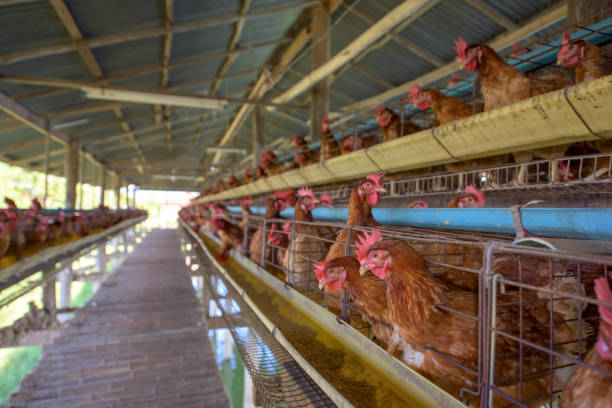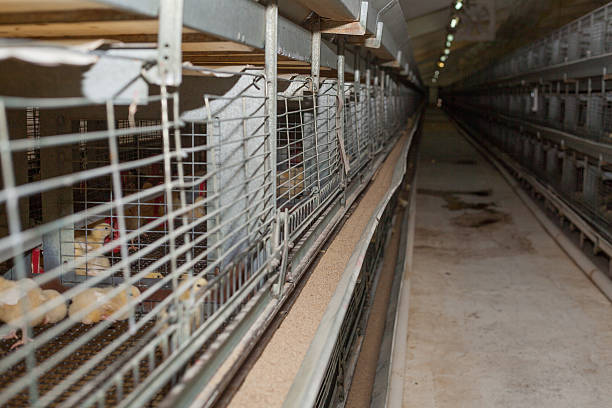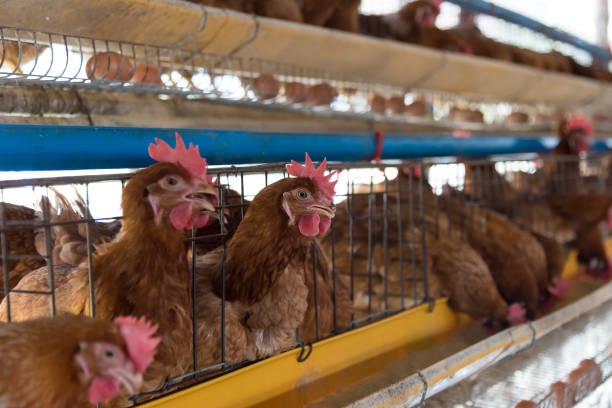Nigerian Poultry Farm Setup Guide with Complimentary Equipment Quotation
Setting Up a Thriving Poultry Farm in Nigeria: A Comprehensive Guide with Free Equipment Quote
The poultry industry in Nigeria is booming and with good reason – it’s a profitable venture with strong domestic demand, government support, and growing export potential. Whether you’re a beginner or an experienced farmer looking to expand into poultry, starting a successful poultry farm requires careful planning, the right equipment, and a solid understanding of the market. This guide will walk you through every step of setting up a poultry farm in Nigeria, from choosing the right location to sourcing feed, selecting breeds, and setting up your cages.
To make your journey easier, we also offer complimentary equipment quotations tailored to your specific scale and goals, whether you’re planning a small family-run farm or a large commercial enterprise.
Step 1: Clarify Your Objectives and Choose a Poultry Type
The first decision you need to make is whether you want to run a broiler farm (meat production) or a layer farm (egg production). Some farmers operate both, but it’s more practical to begin with one and expand later.
Broiler Farming (Meat Production)
Broiler chickens grow quickly, reaching market weight in about 5-6 weeks. It’s a faster return on investment but also involves more intense management, especially in feeding and health monitoring.
Layer Farming (Egg Production)
Layer chickens start laying eggs at around 18–20 weeks and continue for about 12–16 months, depending on breed and management practices. Eggs are a daily necessity in Nigerian households and food businesses, offering consistent demand.
Step 2: Determine the Scale of Your Operation
The size of your poultry farm depends on several factors, including capital, available land, and long-term goals. Here’s a rough breakdown:
Mini Farm (50–500 birds): Suitable for family or small local markets.
Medium Farm (500–5000 birds): Ideal for entrepreneurs aiming to supply local markets or small chains.
Large Commercial Farm (5000+ birds): Requires significant investment but offers economies of scale, especially for egg farming.
For each scale, the type of equipment and housing will vary. That’s where our expert assistance comes in. With your desired scale, we’ll provide a complimentary quotation for the right equipment, from cages to feeding systems to ventilation.
Step 3: Find the Right Location
Location plays a critical role in the success of your poultry business. Consider the following:
Accessibility: Ensure the farm is on a motorable road and easily accessible for supplies and transportation of birds or eggs.
Land Availability: You’ll need enough space for houses, feed storage, waste management, and expansion.
Proximity to Markets: Being close to buyers or suppliers can reduce transport and spoilage costs.
Water and Electricity: Reliable, clean water supply and steady power are essential. In Nigeria, a generator is almost a must-have if you’re not on a strong grid.
Avoid areas near residential zones to minimize complaints about noise and odor.
Step 4: Construct or Modify the House
The poultry house should provide a safe, clean, and stress-free environment for the birds. In Nigeria’s tropical climate, managing heat and moisture is vital.
Key Features of a Good Poultry House:
Raised floor (concrete or wire-bottom) to prevent disease and fecal contamination
Good ventilation
Protection from predators and pests
Ample space per bird (we’ll help you determine the exact cage layout)
Adequate lighting for layers
Using modern layer cages or broiler cages is highly recommended. They keep birds clean, reduce disease transmission, and maximize labor efficiency.
That’s why we offer customized cage setups based on your flock size and budget. Contact us for your free equipment quote, and our team will help you choose the best layout and system for your space.
Step 5: Choose the Right Breeds
Choosing the right bird breeds makes all the difference in productivity and profitability. Popular breeds in Nigeria include:
For Broilers
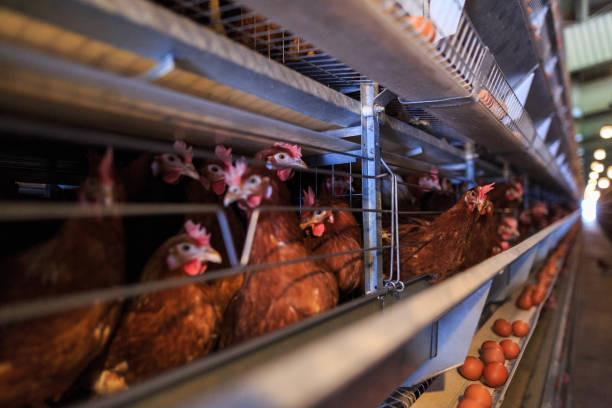
Ross 308
Cobb 500
These grow fast, convert feed efficiently, and have good disease resistance when managed properly.
For Layers
Hy-Line Brown
ISA Brown
These breeds are well-known for high egg output (300+ eggs per bird annually) and adaptability to various climates.
Ensure your supplier is certified and provides disease-free chicks.
Step 6: Start with the Best Equipment
The right equipment ensures your birds grow in a safe, healthy environment and improves your operational efficiency. Here are the essential poultry equipment items to invest in:
Cages (Layer or Broiler Cages)
Layer cages maximize space efficiency, make cleaning easier, and reduce the spread of disease. Broiler cages help keep birds off the floor, reducing contact with droppings.
Automatic Feeders
Automatic feeding systems reduce labor costs, avoid feed wastage, and ensure uniform feeding across the flock.
Nipple or Bell Drinking Systems
Access to clean water is essential for growth and egg production. Nipple drinkers are the most hygienic and efficient option.
Ventilation System
Proper ventilation helps maintain optimal temperature and air quality in the house, especially in Nigeria’s humid climate.
Waste Management System
Manure belts or scrapers keep the house clean and reduce ammonia emissions, improving bird health.
We specialize in designing and supplying complete poultry equipment systems for Nigerian farms. Our team will tailor the setup to your needs and budget. Best of all, your quote is absolutely free when you contact us.
Step 7: Get Chicks and Focus on Brooding
Once the house is ready and the equipment is installed, it’s time to get your chicks. The brooding period is critical and lasts the first few weeks of a bird’s life.
Key points during brooding:
Maintain optimal temperature (initially 32–35°C)
Ensure proper lighting
Feed starter mash and ensure access to clean water
Maintain hygiene to prevent infections
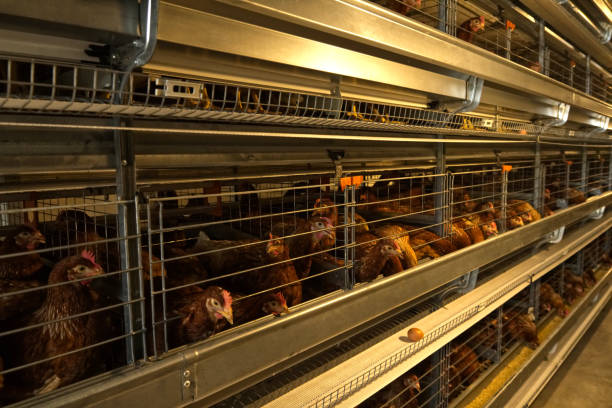
For layers, beak trimming is recommended between 7–10 days to prevent cannibalism.
Step 8: Feed Management
Feed is the single largest operational expense in poultry farming. It accounts for up to 70% of production costs, so choosing quality feeds and managing their consumption effectively is essential.
Tips for Efficient Feed Use:
Use starter, grower, and finisher feeds based on the bird’s age and type
Source quality feeds from reputable feed mills
Monitor feed intake and adjust quantities to avoid wastage
Use automatic feeders to improve efficiency
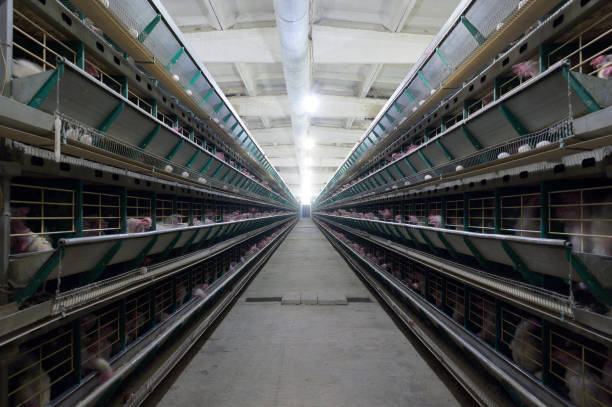
Ensure your equipment includes the right feeding system to match your farm’s layout and bird capacity.
Step 9: Monitor Bird Health
Healthy birds are productive birds. Set up a vaccination schedule and consult your vet regularly. Watch out for signs like:
Lethargy
Reduced feed intake
Ruffled feathers
Diarrhea or blood in feces
Sudden deaths
Common diseases in Nigerian poultry farms include:
Newcastle Disease
Gumboro (Infectious Bursal Disease)
Fowl Typhoid
Coccidiosis
Biosecurity measures like foot baths, limiting visitor access, and isolating sick birds help manage outbreaks.
Step 10: Harvest and Market
For Broilers
Broilers are usually sold live to markets or processed into dressed chickens. Some farms have started direct-to-consumer sales or partner with hotels and restaurants.
For Layers
Eggs can be sold through local markets, supermarkets, hotels, or doorstep delivery. Branding and packaging your eggs can increase perceived value and demand.
Building strong market relationships is key to sustainability.
Step 11: Keep Records and Evaluate
Track everything: feed usage, mortality rates, egg production, vaccinations, expenses, and income. This data will help you optimize your operations, control costs, and make informed business decisions.
Use a simple Excel spreadsheet or a small farm management app to track and analyze your performance.



